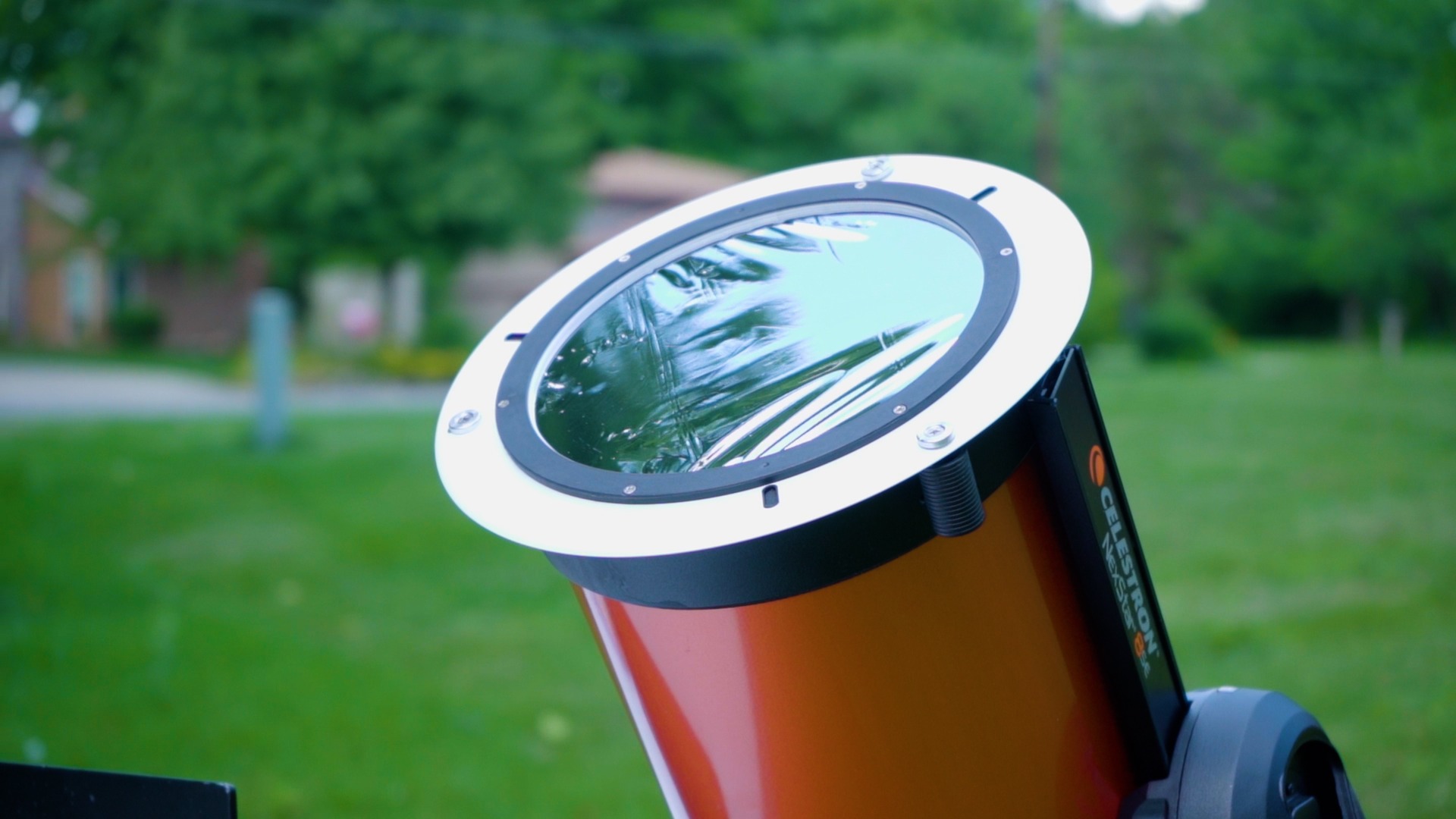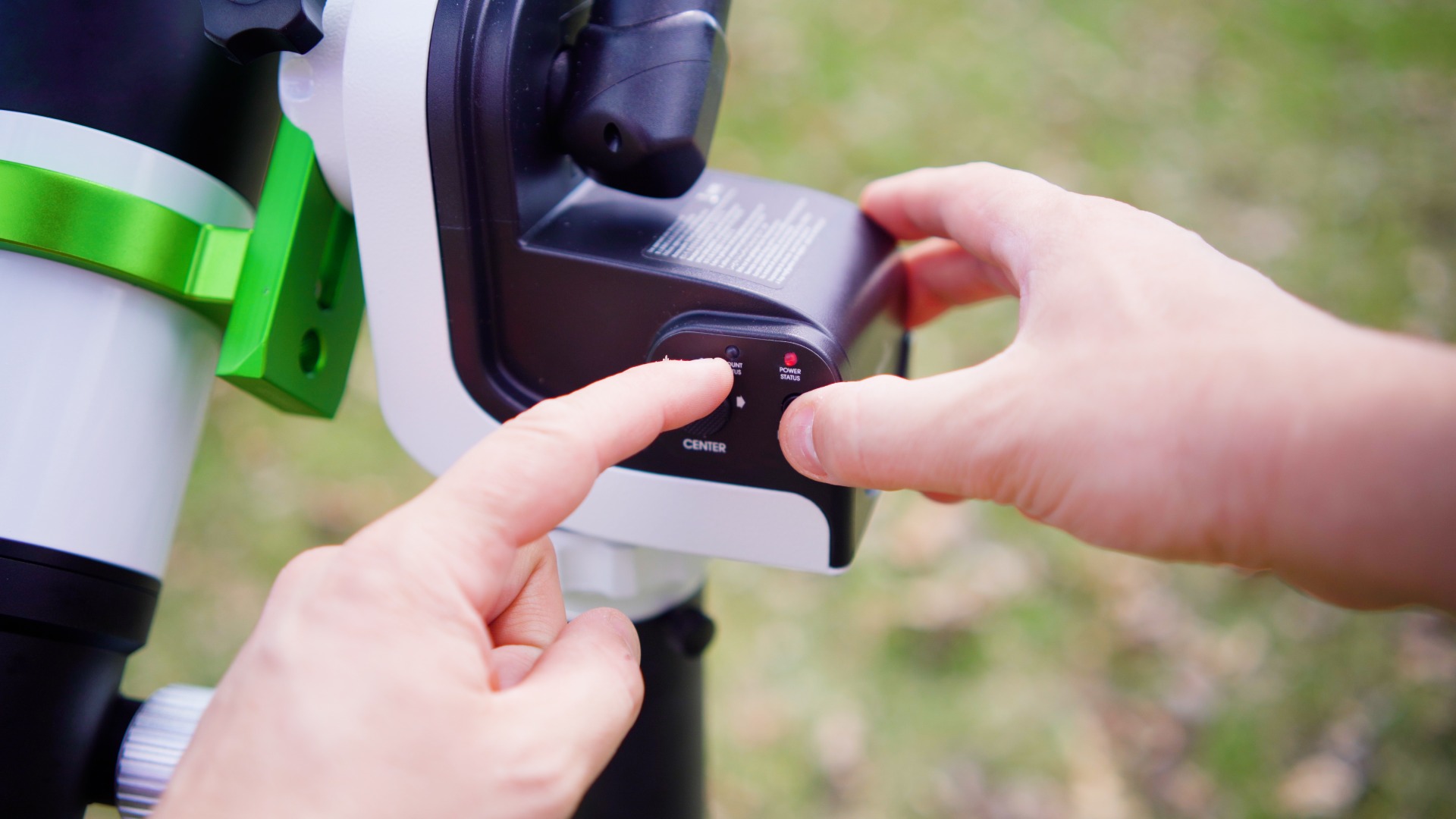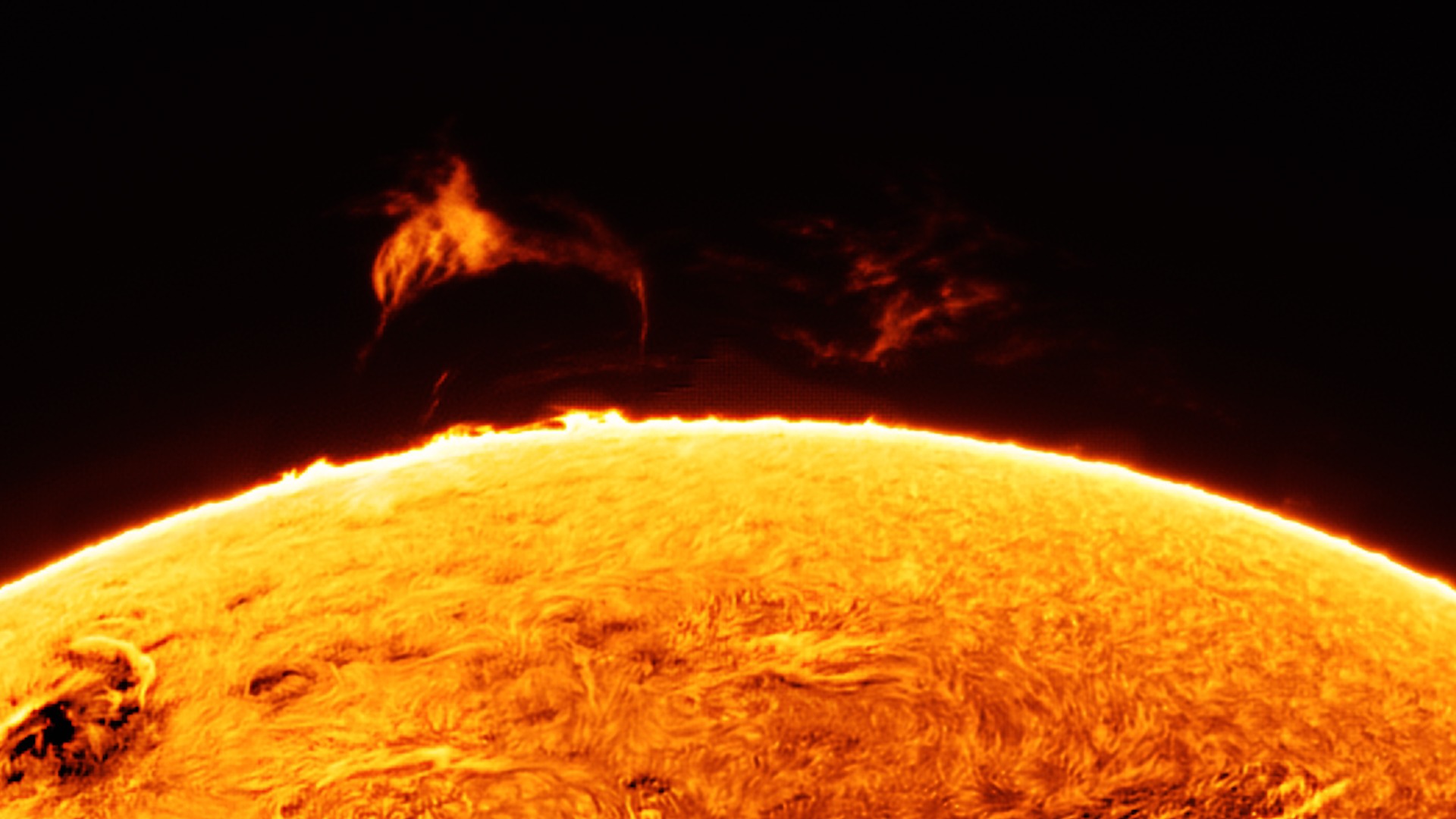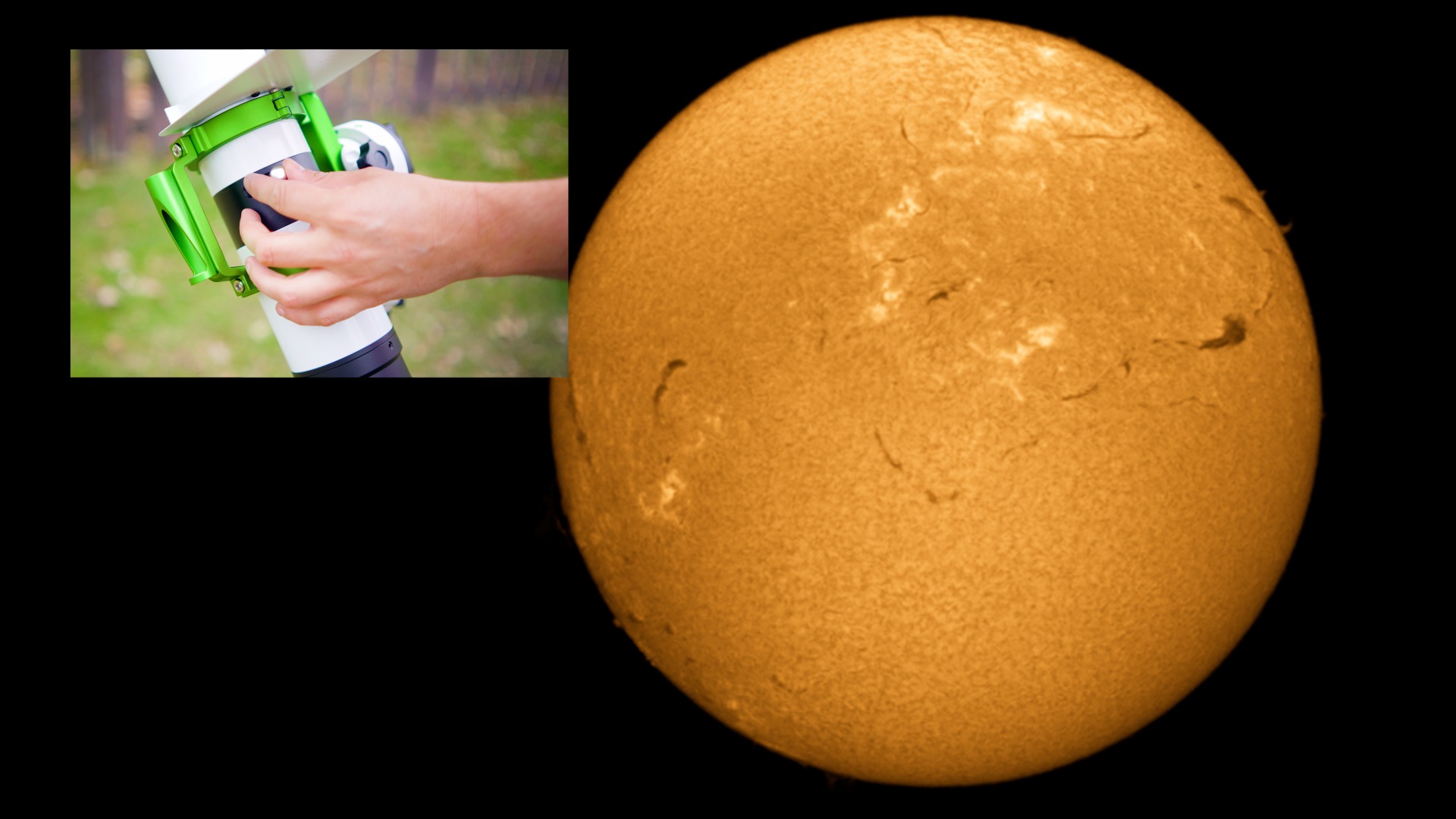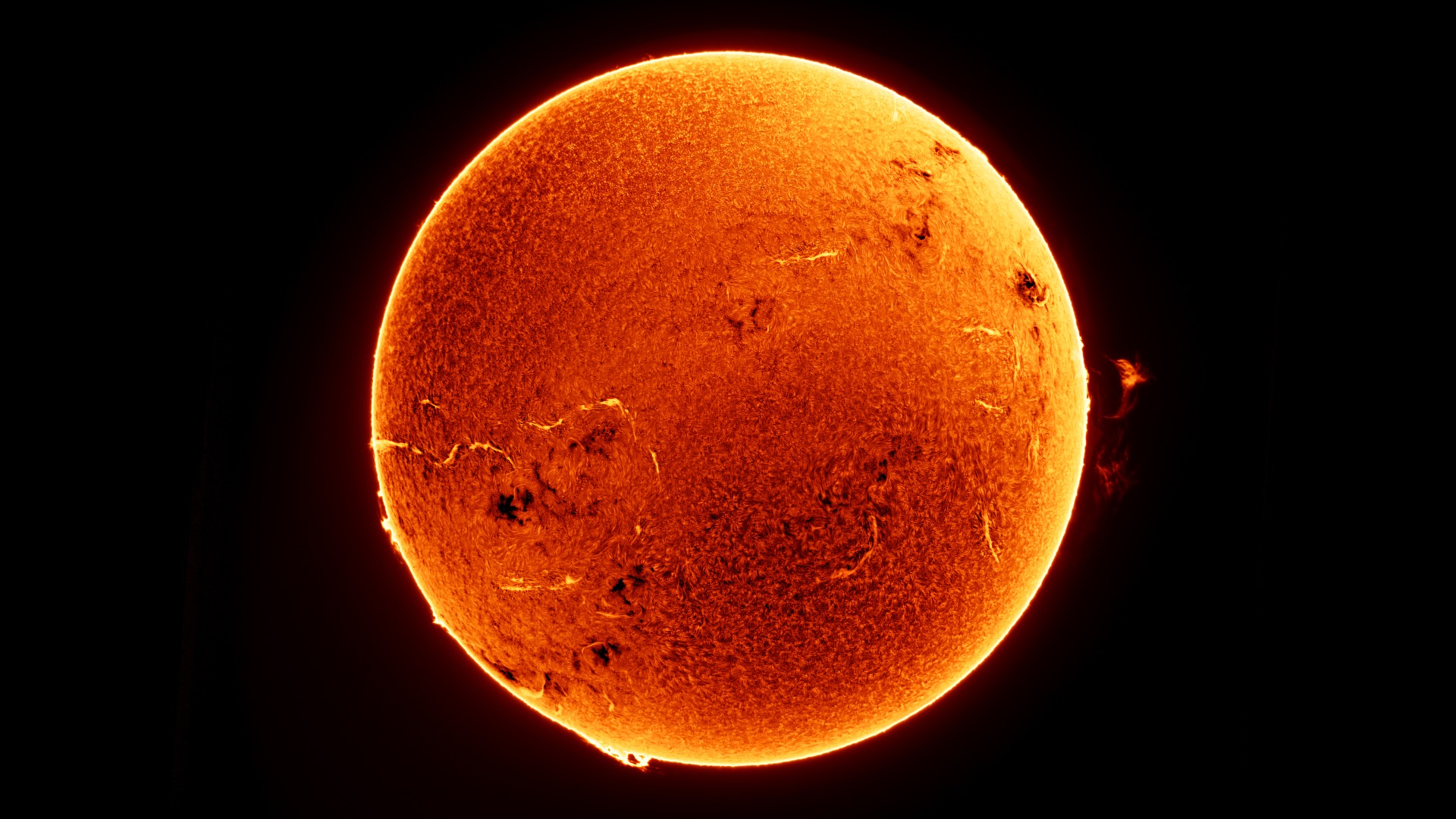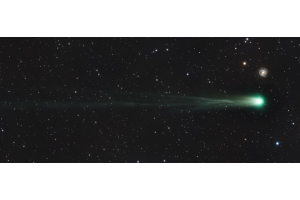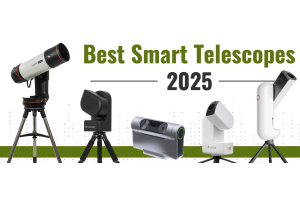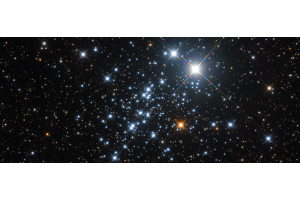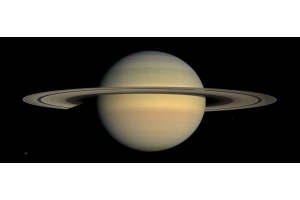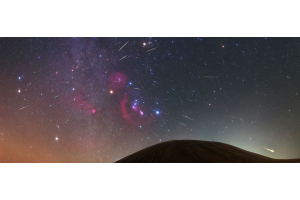
An In-Depth Review of Sky-Watcher’s First H-Alpha Solar Telescope
Sky-Watcher has officially entered the world of dedicated H-alpha solar telescopes with the HelioStar 76. If you’ve ever wanted to experience the Sun’s surface in unprecedented detail—seeing granules, filaments, and towering solar prominences—this telescope is the ultimate choice.
In this review, we’ll explore what makes the HelioStar 76 unique, explore its impressive features, and share Teagan’s experience using it for both visual observation and astrophotography.
H-Alpha vs. White Light: Why This Matters
Before we get into the details, it’s crucial to understand how an H-alpha solar telescope like the HelioStar 76 differs from a white light solar filter.
- White Light Filters (such as those used on eclipse glasses or standard telescopes) allow a broad range of visible light to pass through. They reveal features like sunspots but don’t show the Sun’s dynamic outer atmosphere in detail.
- H-Alpha Telescopes use a narrowband hydrogen-alpha filter, which isolates a specific wavelength of light (656.28 nm). This allows you to see the Sun’s incredible surface features—granules, filaments, and massive plasma prominences that extend far beyond the Sun’s surface.
*The Sky-Watcher HelioStar 76 meets ISO 12312-2 standards, ensuring safe solar viewing when used correctly. Always remember: never look at the Sun without proper solar equipment!*
Sky-Watcher HelioStar 76: Features & Specifications
Optics & Build Quality
- Aperture: 76mm
- Focal Length: 630mm
- Focal Ratio: f/8
- Optical Design: Fully multi-coated doublet lens
- Weight: 8.4 lbs
- Bandpass: 0.55-Angstrom
One of the standout features of the HelioStar 76 is its 0.55-Angstrom bandpass, which delivers performance equivalent to a double-stack filter while using only a single filter. This results in exceptional contrast and detail without requiring an additional filter stack and a significant reduction in cost.
Included Accessories
- Vixen-style dovetail with mounting rings
- Easy-to-use solar finder for quick alignment
- Clip-on sunshade for added viewing comfort
- 20mm 1.25” eyepiece
- Smartphone adapter for simple imaging
- 11.5mm blocking filter with T-thread for camera attachment
- Hard carrying case for protection and portability
Mounting Options: Standalone or with SolarQuest
The HelioStar 76 is available in two configurations:
- Telescope (OTA) Only with included accessories listed above.
- With the Sky-Watcher SolarQuest Mount – an automatic Go-To mount designed around solar observation.
Performance & Observing Experience (Teagan’s Thoughts)
Setting up the HelioStar 76 on the SolarQuest mount was quick and straightforward. The included solar finder made locating the Sun easy, and once centered, the views through the eyepiece were astonishing.
- Surface Details: Sunspots, granules, and intricate filaments were visible with high contrast. Immediately after looking through the eyepiece for the first time, I knew that this scope was special and unlike another solar scope I’ve done solar observation with. Adjusting the trifid tuning made a huge difference in the amount of detail that I was able to pick up on the surface. You can see how dynamic and active the sun is during a solar maximum. A perfect time to consider this scope for your own arsenal.
- Prominences: The true highlight—massive arcs of plasma extending outward, some many times the size of Earth. The coolest aspect in my opinion was being able to watch these prominences change over time. Leaving the scope setup in the yard and returning to view through it 30 minutes later would show that the largest proms had change significantly in both shape and size.
Tuning the View: Sky-Watcher’s Trifid Tuning System
The HelioStar 76 features Sky-Watcher’s Trifid Tuning System, which allows you to fine-tune the etalon plates inside the telescope. This lets you enhance different solar features:
- Adjust for surface details like sunspots and granules.
- Shift to filaments—dark tendrils of plasma against the bright solar disk.
- Tune to maximize the visibility of prominences, revealing their full structure in incredible detail.
Astrophotography with the HelioStar 76 (Teagan's imaging experience)
Of course, as an astrophotographer, I couldn’t resist capturing pictures through the HelioStar 76. I paired it with a ZWO ASI533MM monochrome camera, which provided a perfect full disc.
Key Features for Imaging:
- 11.5mm blocking filter with built-in T-threads – Easy camera attachment via M42 threads.
- Dual-speed 10:1 focuser – Fine adjustments made dialing in focus effortless.
The level of detail in the filaments, granules, and bright prominences was far beyond what I ever expected.
Try Solar Imaging for Yourself
To help you experience the HelioStar 76 firsthand, we’re sharing our raw data from this review so you can try processing it yourself!
- Download the raw solar data via the form in the article linked below.
- Tag us on Instagram (#HighPointScientific) with your final processed image!
- Your image could be featured on our social media!




